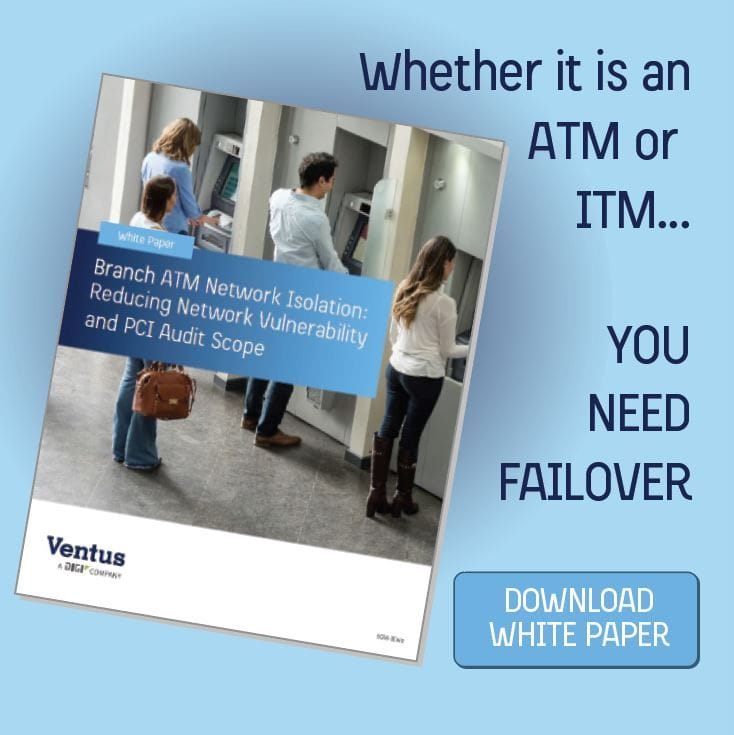Aug 08, 2023
Retrospective: Impact of COVID-19 on the Expansion of Interactive Teller Machines (ITMs)
As we emerge from the challenging times of COVID-19, it's an opportunity to reflect on the transformative impact it brought.
For a number of consumer-facing industries, the effects of COVID-19 introduced brand-new processes, strategies, approaches, and technologies to workers and/or their customers. Some of these went away along with the lockdown and social distancing, while others are now firmly entrenched becoming the "new normal."
For the finance sector, however — specifically financial institutions (FIs) such as bank branches and credit unions — the pandemic didn't introduce new technologies but did expand their utilization and deployment.
ITMs are one of these ripple effects. While interactive teller machines, introduced in 2010, long preceded the coronavirus, financial institutions that already had ITMs in place were able to efficiently navigate the crisis in a manner that has prompted other banks and credit unions to follow their lead.
COVID led to fewer banking channels
Similar to many other services, traditional personal or business banking activities can largely be done online, whether it's depositing checks, transferring funds between accounts, or obtaining balance statements. However, since retail banking remains highly cash intensive, there are still many tasks that must be done in in-person settings, some of which may involve tellers. As a study by brand research firm Arizent found, 1 in 4 baby boomers prefer in-person banking to the exclusion of mobile or online.
But when FIs were forced to close their doors to face-to-face interaction during the pandemic, it created a host of logistical challenges both for customers as well as banking professionals. The number of servicing mediums shrank drastically.
ITMs maximized options and created a sense of normality
Perhaps the biggest difference between ITMs and ATMs is their live teller capabilities. Through a reliable internet connection and a banking facility's core processor, a remote teller and ITM user can communicate with one another just like they would in a traditional, face-to-face retail bank. And because they're highly secure, ITMs are deployable in many different environments, be it within a bank's lobby, vestibule, or drive-thru.
Texas-based Alliance Credit Union was an early believer in ITM technology; the effects of the lockdown proved that its ITM interest was timely.
Josh Wade, chief operating officer for Alliance Credit Union, told ATM Marketplace that when state officials required all "non-essential" private businesses to close, which included their location, it confused and disrupted everyone.
"We had back-office staff working from home and reduced employees on-site in order to social distance," Wade recounted. "Members were concerned about teller interactions and we were scrambling to offer alternatives to 'traditional transaction methods."
Given the highly dynamic nature of the pandemic and not knowing when conditions would return to how things were prior to COVID, the credit union partnered with an ITM solutions provider that enabled live interactions, check cashing, depositing, and the other benefits that customers have come to expect from in-person banking.
Wade noted that ITMs brought a sense of normalcy to a situation that was anything but ordinary.
"Members were able to use the machines at their convenience and the perception of not being a 'face-to-face' transaction eased some of their concerns," Wade said. "We were able to staff all of our ITM's active teller functions with one person, therefore reducing staff in the office and offering better social distancing options. This was a huge benefit for our members, not to lose service and still allow Alliance to do what was best for our employees and community."
People want them
ITMs aren’t just a good investment because they optimize banking service channels. They're also something that customers actively want to use — a desire that transcends generations. Indeed, as consulting agency Adrenaline found through survey research, over 70 percent of baby boomers — a generation that's traditionally more technology averse than others — would be "extremely" or "very comfortable" using ITMs. Meanwhile, 85 percent of Generation X and 86 percent of millennials are similarly enthused.
What makes ITMs such an attractive banking vehicle? According to Juliet D'Ambrosio, managing director of strategy for Adrenaline, ITMs marry the personal touch of physical banking with the convenience of digital.
"Customers are attracted to ITMs because they offer the best of both worlds: a channel that fuses the speed and access of technology while delivering on the enduring desire for human connection through the live teller access," D'Ambrosio told ATM Marketplace in an email.
They're also highly cost-efficient. Based on industry research, up to 95 percent of teller interactions can be migrated to ITMs. In fact, D'Ambrosio said more than 80 percent of FIs that have ITMs currently intend to expand their rollout, citing her organization's polling data.
If you're looking to invest in an ITM, you'll need a highly reliable network to go along with it. Ventus is the perfect complement to your ITM solution. We maintain more ATM and ITM networks than any other provider. You'll have everything you need to connect when you select Ventus, including encrypted multipoint routing, a network router leveraging LTE wireless or broadband WAN, and PCI-compliant connectivity.
Contact us today to learn more.
